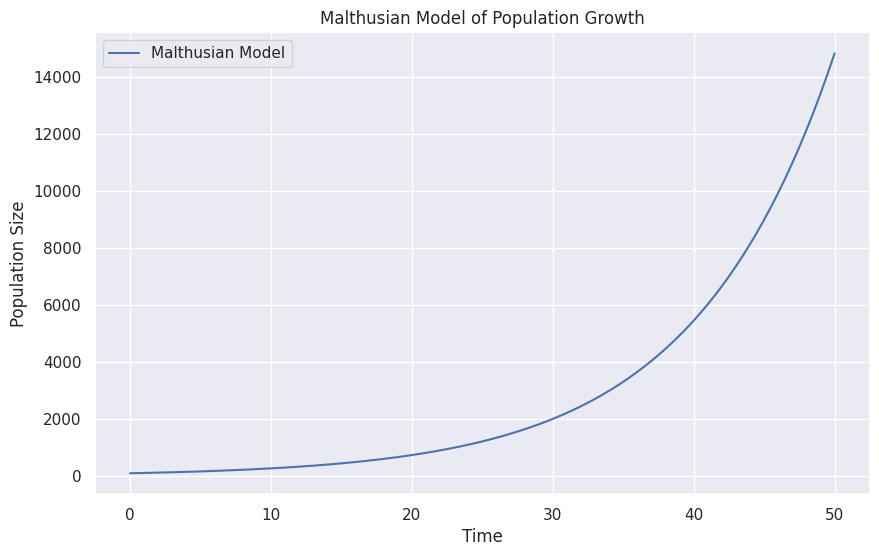What is Malthusian Model
The Malthusian model is a demographic model that illustrates population growth in relation to available resources. It was developed by Thomas Robert Malthus, an English cleric and scholar, in the late 18th and early 19th centuries. The central idea behind the Malthusian model is that the population grows exponentially, while the growth of resources, such as food, occurs at an arithmetic rate. According to Malthus, this discrepancy between the growth rates would eventually lead to overpopulation, causing a shortage of resources and ultimately resulting in a population crash due to famine, disease, or other catastrophic events.
Basic Malthusian Growth Equation
The Malthusian model is based on the concept that the rate of population growth is proportional to the current population size. Mathematically, this is represented by the differential equation:
Here,
The solution to this differential equation is an exponential function:
Where
Assumptions and Simplifications
There are some critical assumptions behind the basic Malthusian growth equation:
-
Constant Growth Rate
The intrinsic growth rate (r -
Unlimited Resources
The model assumes that there are no limits on the resources required for population growth. In reality, factors such as food, space, and other resources can limit population growth. -
Closed Population
The model does not account for immigration or emigration. The changes in population size are solely due to births and deaths. -
Instantaneous Reproduction
The model assumes that the organisms reproduce continuously and instantaneously, which is not realistic especially for humans.
Plotting Malthusian Model Using Python
I will demonstrate how to plot the Malthusian model using Python. The visualization will provide a graphical representation of how population evolve over time.
Here is the Python script that plots the Malthusian model:
import numpy as np
import matplotlib.pyplot as plt
import seaborn as sns
def malthusian_model(p0, r, t):
return p0 * np.exp(r * t)
# Set the style using seaborn
sns.set()
# Parameters for the Malthusian model
p0 = 100 # Initial population size
r = 0.1 # Intrinsic growth rate
# Create an array of time values
time_values = np.linspace(0, 50, 100)
# Calculate the population size for each time value
population_sizes = malthusian_model(p0, r, time_values)
# Plotting
plt.figure(figsize=(10, 6))
plt.plot(time_values, population_sizes, label='Malthusian Model')
plt.xlabel('Time')
plt.ylabel('Population Size')
plt.title('Malthusian Model of Population Growth')
plt.legend()
plt.grid(True)
plt.show()

This code will generate a plot showing how the population size changes over time according to the Malthusian model.